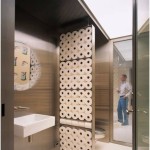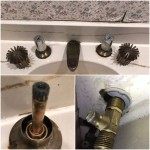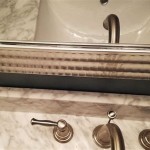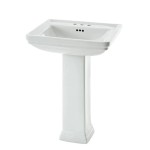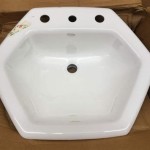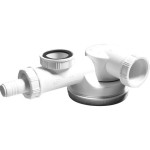How to Hide Water Pipes in the Bathroom
Exposed water pipes in a bathroom can detract from the aesthetic appeal and create a cluttered look. Fortunately, there are several effective methods for concealing these pipes, transforming the bathroom into a more visually appealing and streamlined space. This article explores various techniques for hiding water pipes, providing practical guidance for homeowners and DIY enthusiasts.
1. Encasing Pipes with Drywall or Paneling
Drywall and paneling are versatile materials commonly used to create walls and enclosures. This method involves building a false wall or a box-like structure around the pipes. The materials used for this method are readily available and relatively inexpensive, making it a cost-effective solution. Furthermore, drywall and paneling offer excellent sound insulation, providing noise reduction benefits. Here's a step-by-step guide:
- Measure and Plan: Carefully measure the area surrounding the pipes to determine the dimensions of the enclosure. Plan the location and size of access panels for future maintenance.
- Build the Frame: Construct a sturdy frame using wood studs or metal channels, ensuring proper alignment and support. Attach the frame to the existing walls or ceiling with screws or nails.
- Install Drywall or Paneling: Cut and attach drywall or paneling sheets to the frame, ensuring smooth transitions and proper alignment. Secure the panels using screws or nails.
- Finish the Enclosure: Apply joint compound to joints and screw holes, sanding them smooth for a seamless finish. Paint the enclosure to match the surrounding walls or install tile to create a cohesive look.
2. Utilizing Cabinets and Vanities
Cabinets and vanities offer both storage and a practical way to conceal water pipes. This method involves integrating the pipes within the structure of the cabinetry. By strategically placing the cabinetry around the pipes, they can be effectively hidden from view. This option provides added storage space, enhancing the functionality of the bathroom. It's essential to select cabinets and vanities with sufficient depth to accommodate the pipes and ensure proper ventilation.
- Plan the Layout: Consider the location of the pipes and design a cabinetry configuration that effectively conceals them. Choose cabinets with adequate depth to accommodate the pipes and provide ample storage space.
- Install the Cabinets: Carefully install the cabinets, ensuring proper alignment and secure attachment to the walls or floor. Leave adequate space between the cabinetry and the pipes for ventilation and accessibility.
- Add Finishing Touches: Install cabinet doors or drawers, providing easy access to the pipes for maintenance. Choose hardware that complements the style of the bathroom and enhances its overall aesthetic.
3. Incorporating Decorative Features
Decorative elements can be integrated into the bathroom design to conceal pipes. For instance, a decorative shelf or a wall-mounted mirror can be strategically positioned to hide pipes behind them. This method offers flexibility and allows the homeowner to personalize the bathroom's aesthetics. It's essential to select decorative features that complement the existing decor and provide adequate coverage for the pipes. Consider using mirrors with a frame that conceals the pipe or incorporating decorative elements that create visual interest and draw attention away from the pipes.
- Choose Strategic Locations: Select decorative elements that are positioned adjacent to or directly over the pipes. Mirrors, shelves, and artwork are effective options for concealing exposed pipes.
- Install with Precision: Ensure the decorative features are properly installed and securely attached to the wall or ceiling. Leave sufficient space behind the element for adequate air circulation and to prevent any potential moisture build-up.
- Enhance Aesthetics: Choose decorative elements that complement the overall design of the bathroom and provide visual appeal. Consider using a variety of textures, colors, and designs to create a cohesive and aesthetically pleasing environment.
Incorporating these techniques for hiding water pipes in the bathroom can transform the space into a more visually appealing and functional environment. Whether it's through drywall enclosures, cabinetry integration, or strategic placement of decorative features, homeowners have various options to address this common aesthetic concern. By implementing these solutions, homeowners can create a bathroom that reflects their personal style and enhances the overall comfort and enjoyment of their home.

How To Hide Plumbing In Your Bathroom Victoriaplum Com

An Interview With A Master Plumber And 3 Creative Ways To Hide Exposed Pipes Nir Plumbing

Hiding Pipes In Bathroom

Creative Ways To Hide Exposed Plumbing Pipework Mayne Gas Heating

Discover These 5 Methods To Hide Ugly Hdb Bathroom Kitchen Aircon Pipes Style Degree

Boxing In Bathroom Pipework Guru

How To Hide Pipes Behind A Toilet 7 Easy Ways Home Efficiency Guide

How To Hide Pipes In A Bathroom For Sinks Toilets Checkatrade

How To Hide Plumbing In Your Bathroom Victoriaplum Com

How To Cover Pipes In A Bathroom Dans Le Lakehouse

